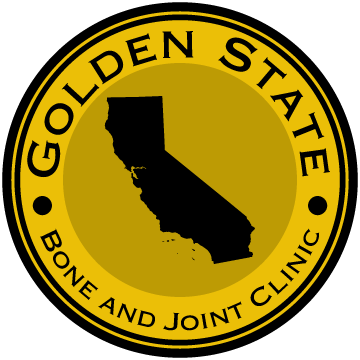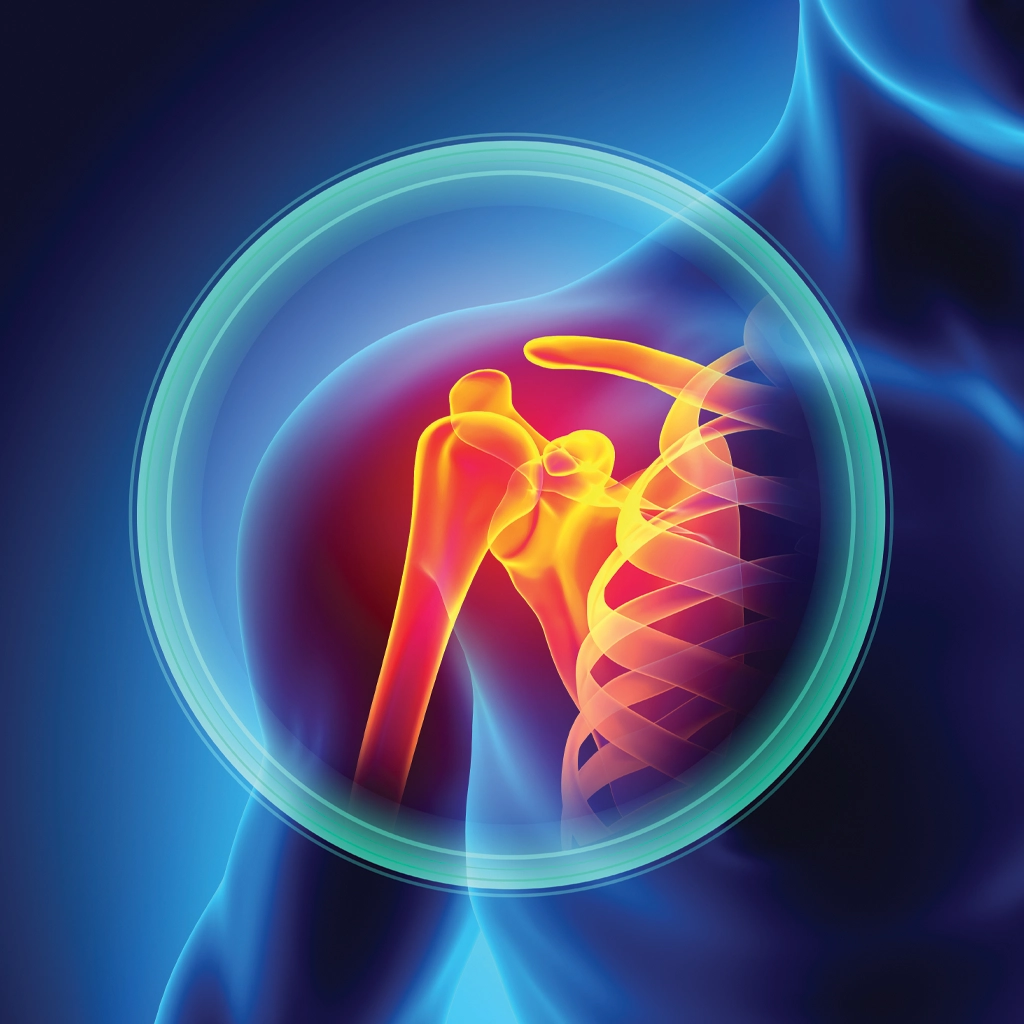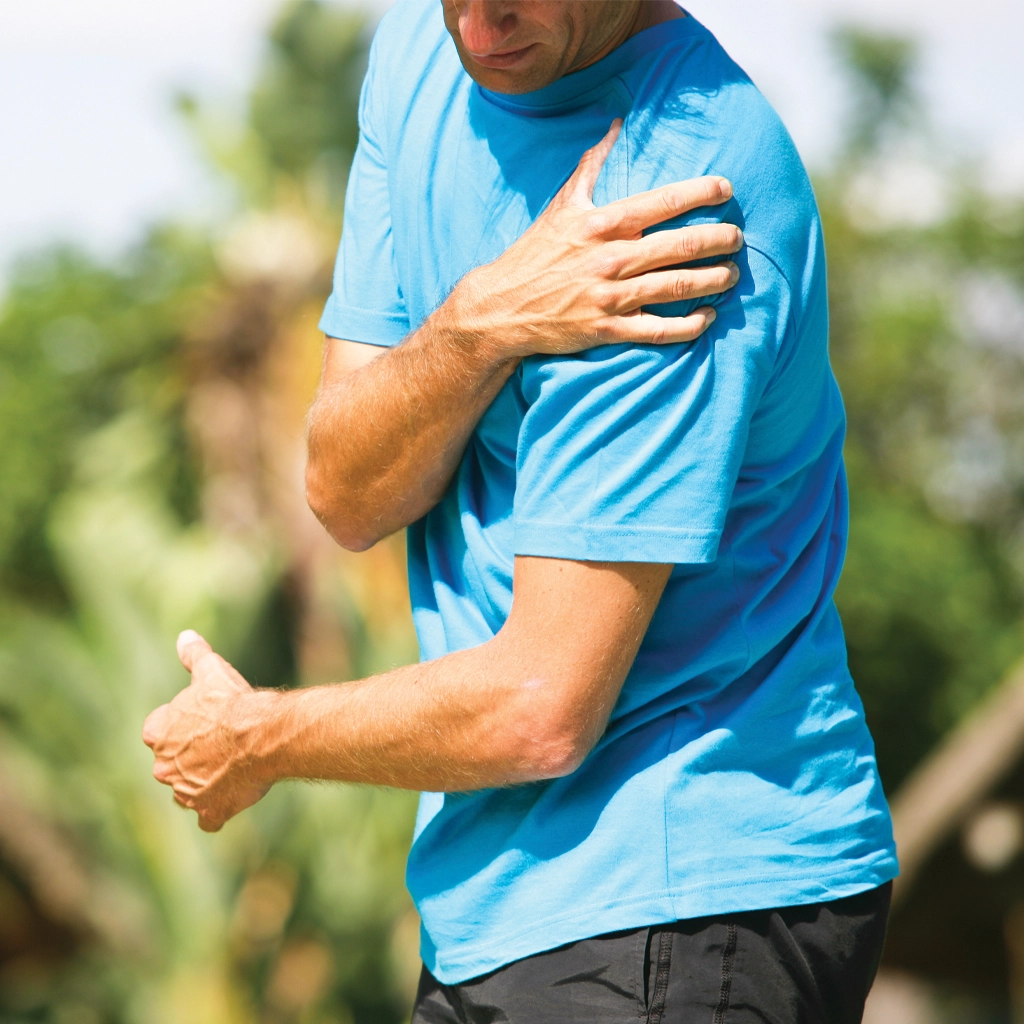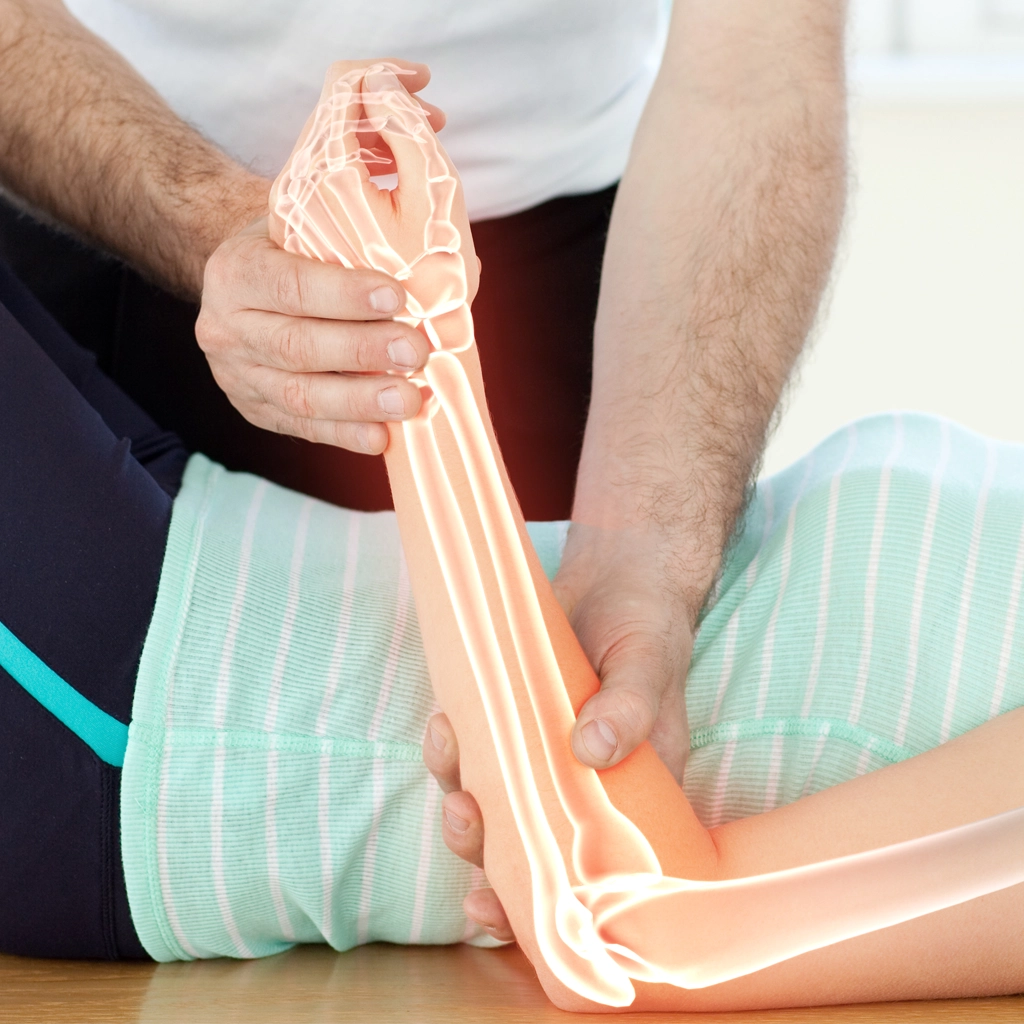Tennis and Golfer’s Elbow
Tennis and golfer’s elbow are the two most common overuse injuries of the elbow. It is most common in individuals over 40 years of age. The typical presentation for tennis elbow is pain at the outside of the elbow (at the lateral epicondyle – the bony prominence on the outside of the elbow), particularly with gripping and/or wrist extension. The reason for this is that some of the tendons that originate at the lateral epicondyle allow us to extend our wrist. With repetitive activities (punching, working out at the gym, any sort of excessive wrist extension or gripping), the tendon origin can degenerate, causing pain.
Golfer’s elbow is the same principle as tennis elbow, but it occurs at the inside of the elbow, at the medial epicondyle. The origin of the wrist flexors and forearm pronator (moving the forearm from palm up to palm down) is at the medial epicondyle. Thus, excessive wrist flexion and forearm pronation can lead to a sharp pain at the region of the medial epicondyle.
The first line of treatment for both conditions is activity modification. By avoiding the activities that aggravate the condition, it can heal, but it can take several months. Physical therapy can be helpful but it must be performed by a knowledgeable therapist, as therapists may try to “strengthen” the affected muscles when doing so will aggravate the condition. Wearing a wrist brace can help both conditions as it prevents excessive wrist flexion and extension.
A cortisone injection can be helpful for both conditions as it can settle down the inflammation. But patients should be educated to the fact that this is not a cure but a possible pain reliever. If the patient feels better and goes back to the same activities that aggravated the elbow in the first place, it will most likely recur.
Platelet Rich Plasma (PRP) is another option for both conditions. PRP is the patient’s own blood product (pure platelets) which is harvested using a centrifuge in the office or in an outpatient surgery center. It is generally not covered by insurance, as it is considered “experimental” by insurance companies. In truth, the data for PRP is not strong in the medical literature but the best research data for PRP is in the treatment of tennis elbow. PRP can be done one or more times, over a period of time, depending on physician and patient preference.
If a patient’s tennis or golfer’s elbow does not resolve with activity modification, splinting and/or injectable options, then an MRI would be obtained to assess the severity of the condition. Depending on the severity of the tennis or golfer’s elbow, the patient may be a candidate for surgical repair of the tendon back to the bone. This is done as an outpatient, under general anesthesia. The procedure takes about 30 minutes. Recovery is 4-6 months.
Tendinitis
A condition usually caused by an injury or repetitive use of the shoulder, wrist and arm, an inflamed tendon can cause pain within the joints or that radiates down the arm. When this occurs in the elbow, it is commonly referred to as “tennis elbow.” Conservative treatments include activity medication, ice or heat, medications, injections and physical therapy. Surgery to remove the inflamed soft tissues and repair the tendon with stitches or a suture anchor may be required if more conservative treatment methods are not successful.
Cartilage Damage
Found in many parts of the body, cartilage is a tough and rubbery—yet flexible—material that acts as a cushion between the bones of a joint, including the shoulder, elbow and wrist. When cartilage becomes damaged, it can cause pain and limit the range of motion of the arm. Patients who do not respond to conservative or orthobiologic treatments may require surgery to smooth the damaged cartilage, stimulate marrow to form new cartilage, replacing it with cartilage from another part of the body (mosaicplasty) and autologous chondrocyte (new cartilage grown in a laboratory) implantation.



